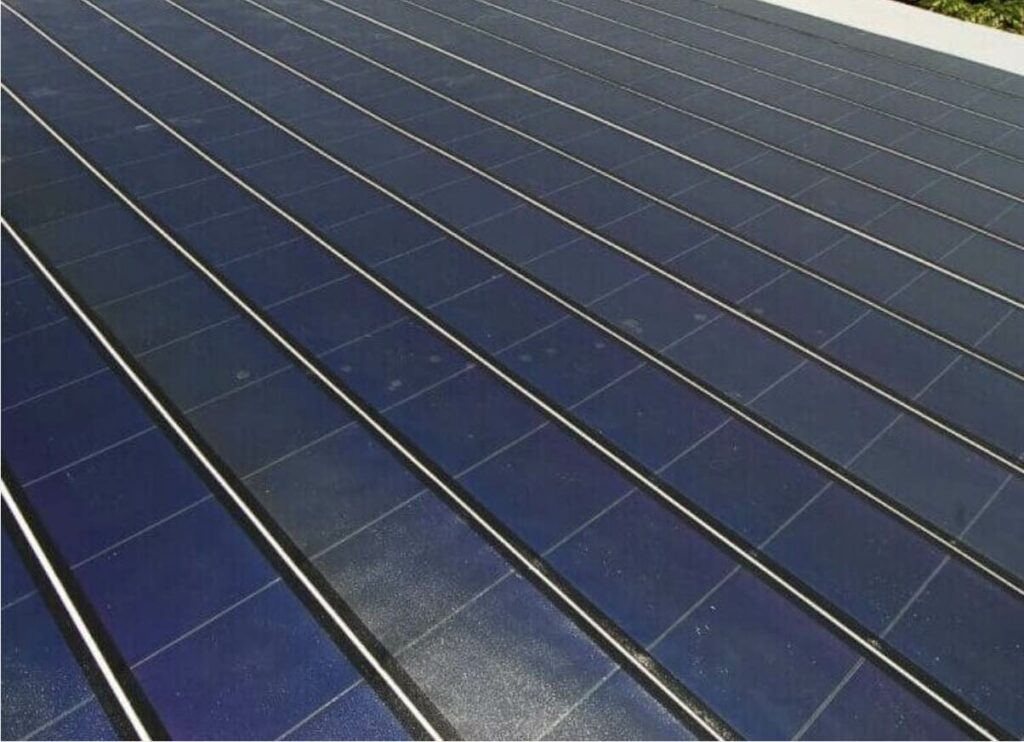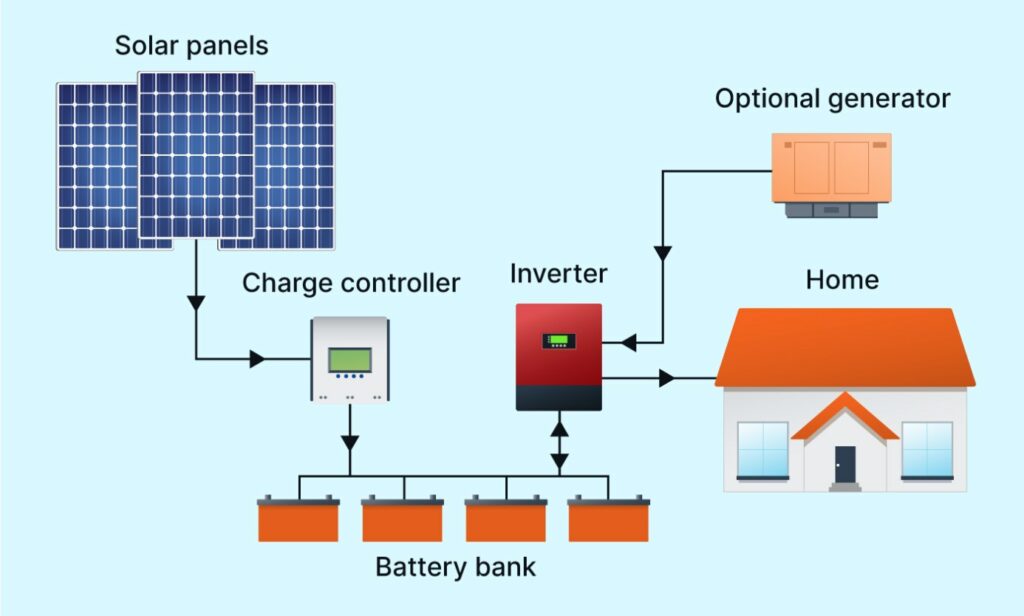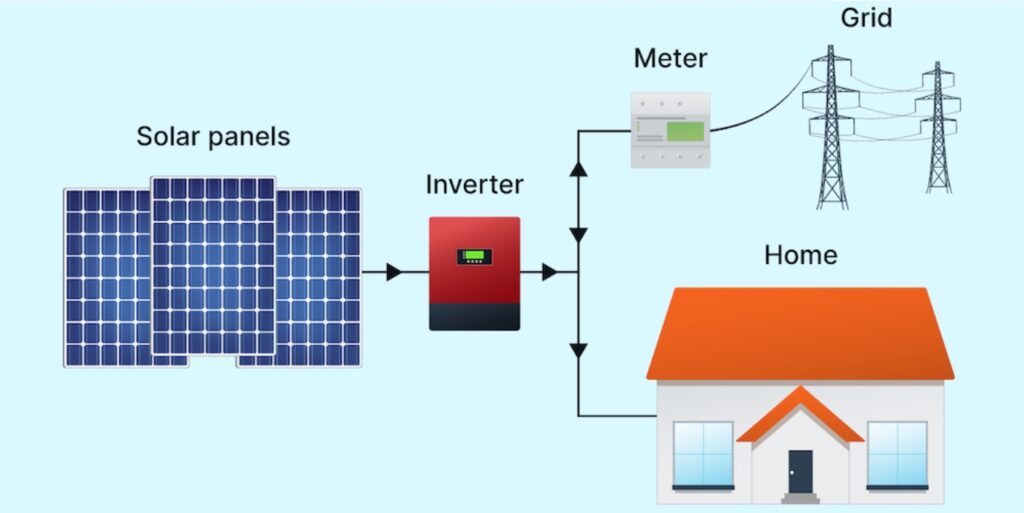Last update July 10th, 2024 at 06:02 pm
There are several types of solar panels on the Australian market. If you are considering going solar, it might be a good idea to learn more about the different solar types. Not only will you find different kinds of solar panel technology, but also different systems.
Your choice may affect the efficiency of the system, but also the costs and your access to electricity in case of a system error or low solar energy production.
In this guide, you will learn more about the different solar panel systems!
Three main types of solar panel technology
When it comes to solar panel technology, there are three main types of solar panels available on the Australian market. Let’s take a closer look at them!



Monocrystalline solar panels
A monocrystalline solar panel has solar cells made of pure single silicone cut into wafers.
Thanks to the pure composition of silicone, the electrons can easily move within the solar cell. This is also the reason monocrystalline solar panels are associated with a high-efficiency rate and great performance.
On the downside, monocrystalline systems are often somehow expensive compared to other systems.
Polycrystalline solar panels
A polycrystalline solar panel consist of solar cells made from wafers of polycrystalline. The wafers are usually cut from molten silicone blocks. These blocks are made of fragments of melted silicone, which contributes to the metallic and flaky look.
It is worth noting that polycrystalline solar panels absorb a lower amount of light than monocrystalline panels, and this also makes them less efficient.
Thin-film solar panels
The third type of solar panel technology that is common in Australia, is the thin-film solar panel. These solar panels consist of a-Si, CdTe, CIGS or other photovoltaic materials deposited in thin layers.
The main advantage of thin-film solar panels is their flexibility. When it comes to performance and efficiency, the result is rather poor.
Different types of solar panel systems
Besides different types of solar panel technologies, you will also be able to choose from different types of panel systems.
Let’s take a closer look at the most popular systems!
Off-grid / stand-alone solar panel systems
As the name might suggest, an off-grid or stand-alone solar panel system will not be connected to the public electricity grid. This solution will typically be relevant for households located in remote areas of Australia, where there is no access to main power.
Stand-alone solar panel systems can operate independently, but you will need batteries to be able to store electric power. On the positive side, off-grid systems will usually cost less than grid-tie systems.

Grid-connect solar panel systems
Most Australians invest in grid-connected solar panel systems. These are linked to the mains grid, and will not require you to have batteries. Although, you can also choose a hybrid solar system which is both grid-connected and connected to a battery.
Grid-tie systems are considered to be the most cost-effective choice, and are both easy-operated and will require little maintenance.
You will also be able to receive a feed-in tariff. With a feed-in tariff, your power supplier will pay for surplus energy that is fed to the grid.

Other types
Solar technology is also available in a number of other applications. For instance, you might find portable solar panel systems used for camping, farming and outdoor activities. Portable solar panel equipment will typically be lightweight and compact.
To give you some examples, we can mention solar-powered USB chargers for cell phones, but also electricity generators used for bigger equipment.
Which type of solar panel is the best choice?
When choosing a solar panel system, it can be difficult to decide which system and technology are the best for you. There are several factors to be considered, including price, efficiency, quality and aesthetics.
For most Australians, it stands between monocrystalline panels and polycrystalline panels, as thin-film solar panels are less efficient. Monocrystalline solar panels are the most efficient, but will usually also be more expensive.
In general, we can say that the best solar panel system will usually be a grid-connected solar panel system based on monocrystalline or polycrystalline technology. Both technologies are great choices, and which one is the best will depend on your preferences.
Explore different types of solar panels
Are you considering going solar? If so, you will find a number of different solar panel technologies and systems to choose from.
When it comes to technologies, you can choose from thin-film, monocrystalline and polycrystalline solar panels. If we look at the different types of systems, you can choose from both grid-tie and stand-alone systems.
For many Australians, the best choice will be a grid-tie system that is highly efficient. This will usually mean that the system is using mono- or polycrystalline technology. Explore the different systems, and find the right solar system for your home!